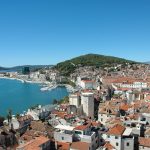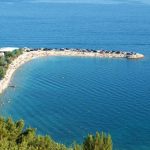January 22, 2020 – For the first time, the Split City Councilors presented the Biological Restoration Study of Marjan Forest Park, which foresees the restoration of several areas that were destroyed during its rehabilitation from bark beetles.
Splitski Dnevnik reports that the Croatian Forestry Institute created the study. According to it, some parts of the forest will continue to be afforested with pine because it cannot be converted to more stable species. However, experts at the institute say that they ultimately want to see blackberry and black ash on Marjan, which is good for the long-term, and because the Aleppo pine is nearing its end.
The afforestation begins in the autumn of this year, said Martina Đodan, a research associate at the Croatian Forestry Institute, and the study will be supplemented with other Marjan sites after the two locations.
“The study is based on an agreement signed by the Croatian Forestry Institute with the City of Split on scientific research and professional cooperation, and it provides biological restoration guidelines for a part of the Marjan area and not for the entire area. The entire project was completed in December last year, using imagery of crewless aerial vehicles, which defined priority areas of about 15 hectares,” said Đodan, who added that the areas are primarily located in the north and that it was mainly to determine stable vegetation.
The selected areas that have been prioritized for restoration have been thoroughly crossed and found to be Mediterranean vegetation.
“It has been determined at these two locations that some parts are ready to plant progressive, native vegetation such as holm oak and its associated olive-like species. However, in some parts, we have rocky micro-locations where the existing vegetation will remain; in some parts, we will have to go again with the pioneer species of pine and cypress.”
The amount of seedlings has been determined. One of the locations will mostly plant conifer oaks (about 40 percent), while in others, the pioneer pine species will be planted the most.
“On 95.5 percent of the Marjan area, vegetation conditions were satisfactory during the recording, which was in late August and early September, and there was a smaller percentage of trees that were infected. The biology of the bark attack itself is a speedy process and it is possible to detect successively new foci or a new state,” Đodan pointed out, adding that pheromone traps are still being set up and the monitoring is ongoing.
“However, we must also say that the culture of the pioneer species in Marjan has reached its physiological maturity and is in a state of dying away. Therefore, the Mediterranean crust is not the only threat to the forest, but it should be looked at as a gradual replacement with mixed younger stands.”
Conditions in Marjan are difficult and increasingly challenging due to climate change, where the Mediterranean is the hardest hit. A smaller proportion of trees was also observed after remediation.
“We would recommend remodeling and cutting down trees in the first place, but preparatory work needs to be done. Due to preparatory actions, we recommend planting in autumn, when seedlings have the greatest survival rate, but it is necessary to provide quality forest material. It is important to nurture the seedlings after they are planted.”
The bark beetle has already hit Marjan and will be there again, and what is needed now is resiliant trees, experts warn. Threats are also linked to climate change and the introduction of invasive species as well as societal pressure on forests. In this regard, some other European countries are also working on adapting forests and forest cover by replacing species, which is the main activity of such a strategy.
To read more about lifestyle in Croatia, follow TCN’s dedicated page.









